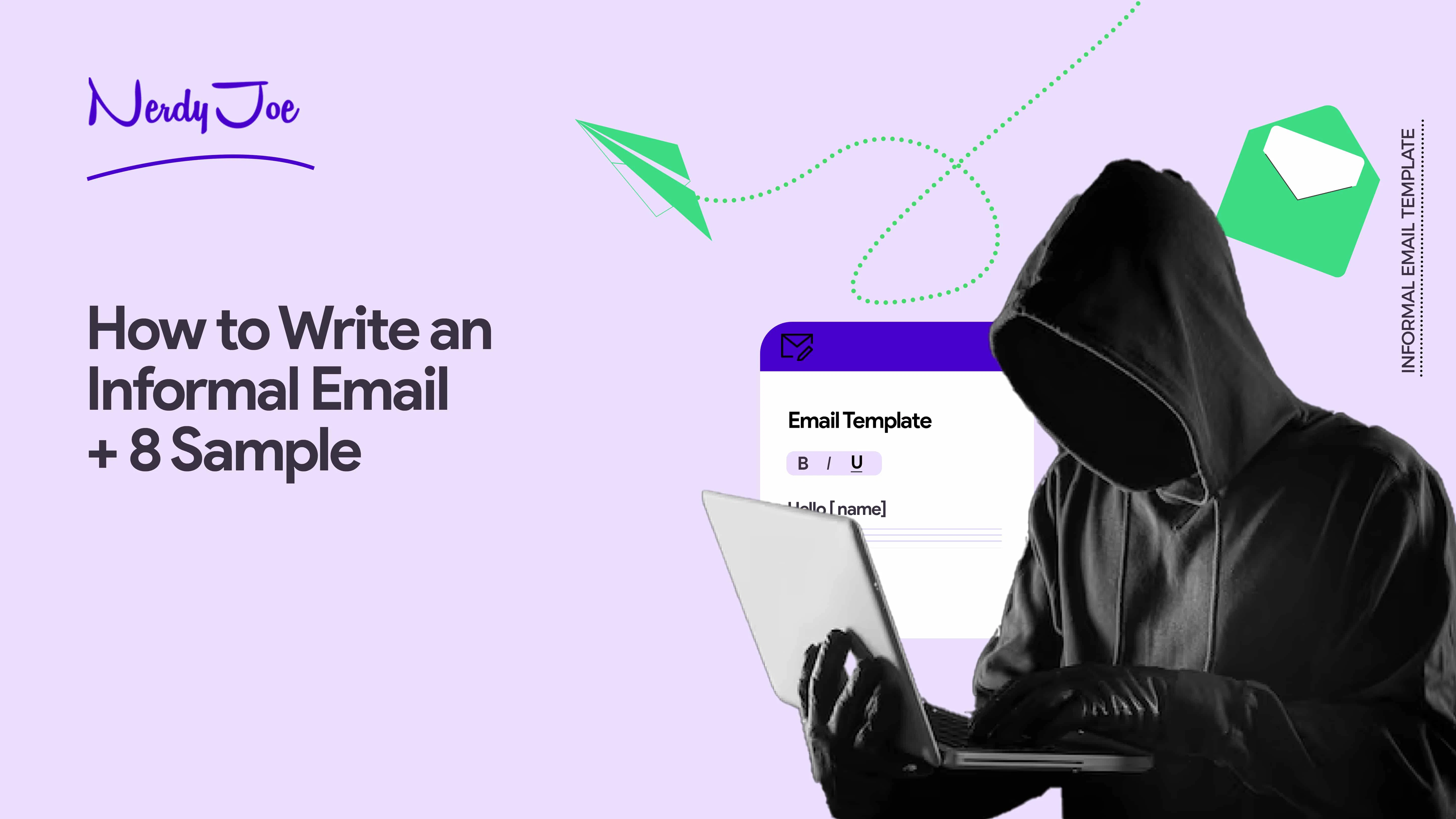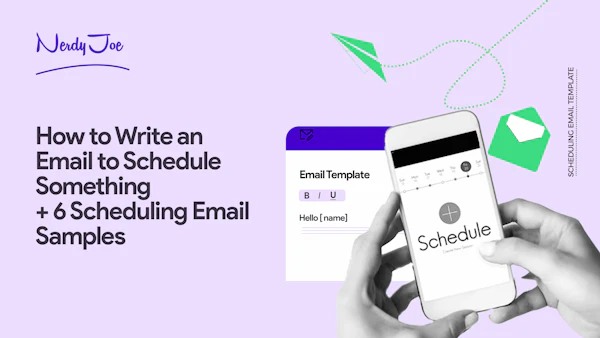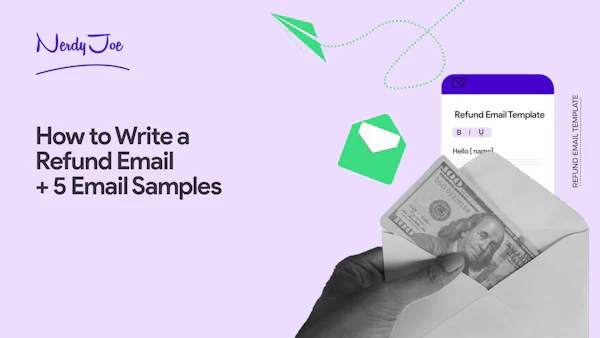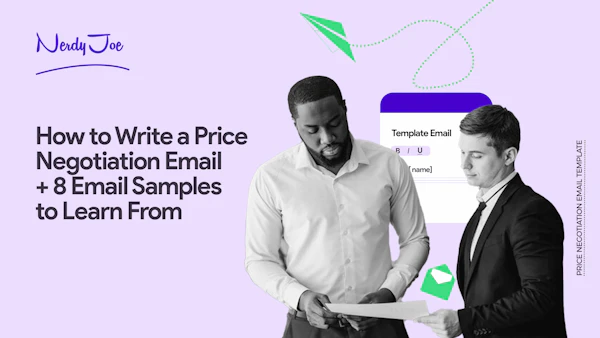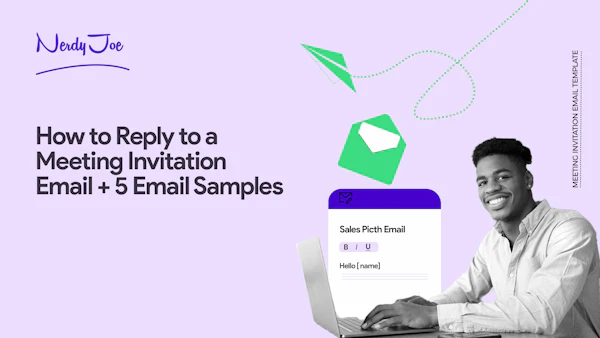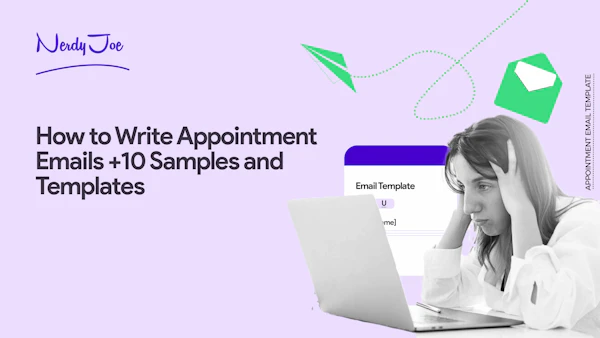While we mostly hear about business and formal emails, their casual counterpart, the informal email, doesn’t get talked about as much.
Well, informal emails are just as crucial in fostering relationships and conveying messages in a more relaxed manner.
Whether you’re touching base with a friend, reaching out to a colleague, or communicating with a family member, informal emails allow for a warmer, more personal touch.
In this article, we will walk you through what an informal email is, why and when you should use one, and offer you 8 sample templates to get you started.
So, let’s begin.
Note: Struggling to get replies or book meetings with prospects that fit in your ICP? We’ll help you get 6 SQLs or book 6 meetings with prospects that are ready to buy for only $999/month. Book a 15-minute consultation now.
What is an informal email, and does it differ from a formal one?
An informal email is a type of email that’s characterized by a relaxed tone, personal touch, and the absence of stringent structure. Unlike a formal email, which adheres to strict etiquette and formats, an informal email has the flexibility to reflect the writer’s personality.
These are the types of emails you send to friends, family, casual acquaintances, or even colleagues and business partners with whom you have a casual relationship.
Formal and informal emails are also different in that you might find abbreviations, shorter sentences, and even slang in an informal email, which would be out of place in formal correspondence. These emails feel more like a chat between friends rather than a formal letter or report.
Why and when should we use informal emails?
Informal emails are perfect for a variety of situations, and understanding when to use them helps you communicate more effectively. Here’s why and when they come in handy:
To foster personal connections: One of the primary reasons to use informal emails is to build and maintain personal relationships. Whether it’s with friends, family, or colleagues, an informal email helps in conveying warmth and sincerity.
Ease of expression: The relaxed tone allows for free-flowing thoughts and ease of expression. It makes it simple for the sender to convey their message without the confines of strict formatting.
Casual updates and check-ins: Informal emails are perfect for catching up, sharing personal news, or even just sending a quick hello. They make it easier to stay in touch without much preparation.
Clarifying work-related matters in a relaxed manner: Sometimes, a formal tone isn't necessary, even in a professional setting. If you’re reaching out to a colleague you’re close with or seeking clarification on a minor issue, an informal email might be the best route.
Sending invitations or organizing gatherings: Planning a weekend hangout or a casual team lunch? An informal email sets a light-hearted tone for such events, ensuring recipients feel the camaraderie.
Feedback or casual reviews: If you’ve tried out a friend’s new restaurant or read a book a colleague recommended, sending feedback through an informal email keeps the conversation genuine and friendly. You can ditch the formal greeting and complicated sentences and be yourself with the informal email writing.
Informal email format: Key elements of an informal email
As you know, formal emails have clear formats and structures that make them effective business and professional communication materials. The fun with informal emails is that you get the liberty to be a tad more personal and creative.
Here’s a breakdown of the elements that constitute an informal email and how to write each:
Informal email subject lines
The email subject line — think of it as the window display of your email. It’s the first thing your recipient sees, and it sets the tone for everything that follows. In informal emails, the subject line can be as casual as you are comfortable with.
Still, you should seek to capture attention and reflect the casual tone of the message. Also, it’s not uncommon to see the use of emojis or exclamation points in informal emails. If you do use them, use them sparingly.
Here are some examples:
“Hey, long time no see!”
“Weekend plans?”
“Quick update from my end 😊"
Informal email salutation
Moving on from the subject line, the next crucial part is your email salutation — a casual greeting. You can forget all the C-suite or white-collar email greeting styles, such as “Dear Sir/Madam” or "To whom it may concern." In informal emails, simplicity is key:
“Hey [first name],”
“Hi [first name],”
“Hello [first name],”
If the recipient is a close friend or family, you can even get away with using nicknames or pet names like, “Hey buddy” or “Hiya sis.”
The email body
For both a formal and informal email, this is where the magic happens and where you write the actual article. The body of an informal email can be as short as a single sentence or as long as a few paragraphs — it all depends on the purpose and the message you want to get across.
Here are some typical traits of informal emails:
Be conversational: Imagine you’re talking face-to-face with the recipient. Use phrases you’d use in daily conversations.
Use personal anecdotes: If you’re updating someone on your life, a short story or two adds color and depth to your email.
Keep it clear: Despite the casual tone, your main message should still be straightforward. Don’t let the informalities cloud the purpose of the email.
Embrace emojis: Emojis can be a fun way to inject personality into your email, but don't overdo it. One or two for emphasis is plenty.
Informal email closing
First, you’ll need to start ending your email with casual email closing lines. An informal closing line reflects a close or casual relationship between the recipient and the sender. They are often friendly, enthusiastic, or affectionate.
Here are some examples you can consider:
“Looking forward to our lunch.”
“Keep me posted on how things are going.”
“Hope you're enjoying the sunshine.”
“Can't wait to hear all about your trip.”
“Good luck with the big move!”
“Please don't hesitate to reach out if you need any further assistance.”
“Enjoy your weekend, and see you at the game!”
“Stay safe and talk soon.”
Wrapping up an informal email is usually a no-brainer. Some popular sign-offs include:
“Cheers,”
“Talk soon,”
“Catch up soon!”
“Catch you later,”
And don’t forget to include a signature, even if it’s as simple as your first name.
8 samples of informal emails you can use
Informal emails can be crafted for various purposes and situations. We have created 8 different samples of informal email examples tailored to specific situations to get you started.
1. Informal email sample for catching up with an old friend.
When reconnecting with an old friend, your primary aim is to bridge the time gap that’s grown between the two of you. Your email should resonate with warmth, nostalgia, and a genuine eagerness to rekindle that old bond.
So, from the opening line, think about shared memories, past experiences, and mutual friends to weave into the email. It’s about recreating the familiar intimacy you once enjoyed and expressing a genuine interest in knowing about their present life, changes, and new experiences.
Here is an informal email for this scenario:
Subject line: Blast from the past: How’ve you been?
Hey [friend’s name],
I was scrolling through some old photos yesterday and came across that hilarious trip we took to the mountains. Remember the squirrel incident?
It got me thinking about how long it's been since we really caught up. How's everything on your end? Job, family, adventures?
Spill the beans!
Can't wait to chat more. Let's not wait another eternity!
Warmly,
[your name]
[your signature]
2. Sample informal email for inviting colleagues to a casual social event.
Casual events with colleagues are a delightful mix of the professional and personal spheres. The tone of your invite should inspire camaraderie and foster team bonding.
While it’s informal, you want to ensure everyone feels included. For example, you can mention the nature of the event, perhaps a fun backstory, or why you thought of hosting it.
The idea is to create a sense of anticipation and community, emphasizing relaxation and the joy of getting to know each other outside the usual office setting. Here is a template you can emulate.
Subject line: Pizza, Games & Chill this Friday? 🍕🎮
Hi team,
I thought it’d be a refreshing change of pace to hang out outside the office. How about a casual evening at my place this Friday?
We can order some pizzas, bring out the board games, and just have a chill night. It’s a potluck style, so if you have a signature dish, feel free to share!
Do drop a yes or no, so I can make arrangements.
Cheers,
[your name]
3. Writing an informal email to a professor with a question or request.
Some of our professors are just fun, and they insist that we don’t have to sweat or pressure through reaching out to them via email — they encourage us to be casual. But still, communication with a professor, even if informal, demands a certain level of respect.
Only keep in mind that the formality can be dialed down, especially if you’ve built rapport with them. Start by acknowledging any recent lessons or lectures and expressing gratitude for the insights provided.
So the email tone should reflect your genuine enthusiasm and curiosity about the subject. Be direct in your request or question but ensure it’s couched in a manner that demonstrates your eagerness to learn more or clarify a topic. Here is an informal email template for this:
Subject line: inquiry about last lecture’s topic
Hello, Prof. [last name],
I hope this email finds you in good spirits. Our last lecture on [topic] really piqued my interest.
There was a point you mentioned about [specific detail], and I was hoping to delve a bit deeper into it.
Would it be possible to catch up briefly after class or at your convenience this week?
Thank you for always sparking such curiosity!
Best regards,
[your name]
4. Sample email for responding to a personal email from a coworker.
When a coworker reaches out personally, it’s a blending of professional and personal realms. Your response should be warm and appreciative. You want to indicate that you value the relationship beyond just work matters.
So, as you craft your response, reference specific points they made, showing you read and thought about their email. Convey enthusiasm for any plans or suggestions they’ve made, and, if possible, add your own input to further the conversation or plan. Here is a template:
Subject line: Re: Weekend adventure plans
Hey [coworker’s name],
Your email totally came in handy! The hiking spot you mentioned sounds just like the adventure I need. Count me in! And thanks for thinking of me; it means a lot.
Looking forward to it!
Best,
[your name]
5. Sample email for thanking a friend or acquaintance.
This email type is all about expressing gratitude. So, you should ensure that the recipient understands the depth and sincerity of your appreciation. Reference the exact nature of their help or favor to make it personal and specific.
It’s also a great idea to suggest a way of reciprocating – be it through a small gesture, spending time together, or just sharing a personal update. Here is an informal email template you can use here:
Subject line: Big, big thank you!
Hi [friend’s name],
I’m super happy and grateful for your help last week. It made a world of difference in a challenging situation.
How about a catch-up over coffee next week, my treat?
I'd love to show my appreciation and also hear what you've been up to.
Warm regards,
[your name]
6. Informal email sample for asking for a favor from a close colleague.
Here, you should start by providing context so they understand the reason behind your request. While maintaining a casual tone, it's essential to acknowledge the value of the favor you're asking for, ensuring they know their effort will be recognized and appreciated.
It’s also considerate to offer an indication of how you might reciprocate or make up for the favor. Here is a template of an informal email you can learn from:
Subject line: A little help for tomorrow?
Hey [colleague’s name],
I hope this message finds you well. I’ve encountered a small hiccup and won't be able to attend tomorrow’s meeting. Would you be a lifesaver and cover for me? I promise to fill you in on all the details later and make it up to you!
Thanks a million in advance.
Cheers,
[Your name]
7. Informal update to a team or group project.
Project updates demand clarity and positivity. So, even though your email is informal, you should be upbeat, focusing on progress and collective goals. Outline what’s been achieved, what’s in the pipeline, and how team members can collaborate or move forward.
Here is a template you can use:
Subject line: Progress update on project X
Hello team,
Wanted to keep everyone in the loop! I’ve successfully wrapped up my part of Project X and am passing the torch to [next person/team]. Feeling pretty pumped about our progress.
Let’s keep up this energy and crush our goals!
Stay motivated,
[your name]
8. Sample email for following up with a contact made at a networking event.
Networking follow-ups are about fostering new relationships. They should strike a balance between personal interest and professional or business potential.
So, begin by reminiscing about the event or the specific conversation that stood out. Express genuine interest in diving deeper into shared topics or exploring mutual opportunities.
It’s a chance to establish rapport, ensuring the contact sees potential for a valuable relationship, whether professional, personal, or both. Here is a template for this:
Subject line: Continuing our chat from [event name]
Hi [contact’s name],
It was such a pleasure connecting with you at [event name]. Your insights on [topic/interest] truly resonated with me, and I’d love to pick up where we left off. How about a coffee next week or a virtual call if that's more convenient?
Hope to hear from you soon!
Best wishes,
[your name]
Key takeaways
Informal emails are inherently more personal and relaxed than formal emails. They provide a platform for genuine connection, whether it’s catching up with an old friend, showing appreciation, or building rapport with new contacts. Authenticity is key; the tone and content should genuinely reflect your personality and intentions.
Even though you are writing an informal email, you still need to strike the right balance. For instance, when reaching out to a professor or colleague, it’s possible to be both respectful and casual. Always consider the nature of your relationship with the recipient and adjust the tone accordingly.
Unlike formal emails that adhere to a strict format, informal emails allow for more creativity and fluidity. While they typically have recognizable components like greetings and closings, the body of the email can vary widely, allowing the writer to express themselves in a manner that feels most natural and true to them.
Informal doesn’t mean vague. Whether you’re updating a team about a project, seeking a favor, or expressing gratitude, providing clear context enhances understanding and fosters better communication. It ensures the recipient knows the “why” behind your email, creating a stronger connection and eliciting a more informed response.
Need help with email marketing and lead generation? We are ready to help. Nerdy Joe can help you get stellar results from our sophisticated email marketing efforts. Talk with us today.
Note: Struggling to get replies or book meetings with prospects that fit in your ICP? We’ll help you get 6 SQLs or book 6 meetings with prospects that are ready to buy for only $999/month. Book a 15-minute consultation now.

